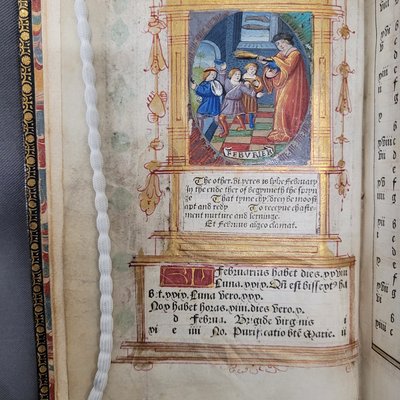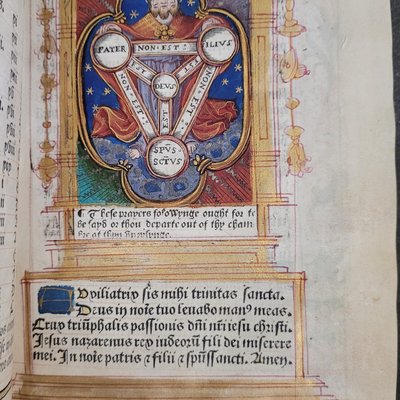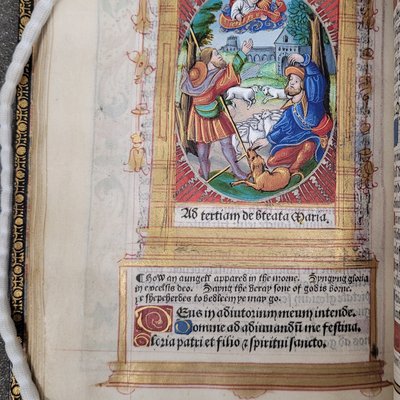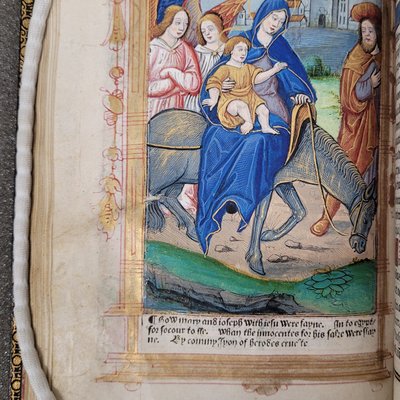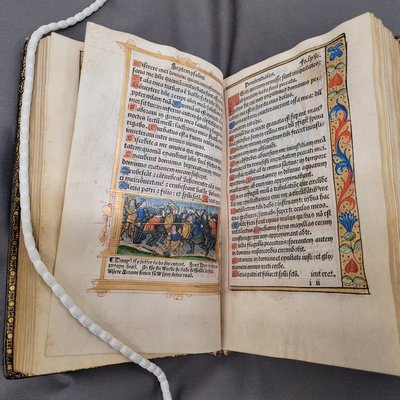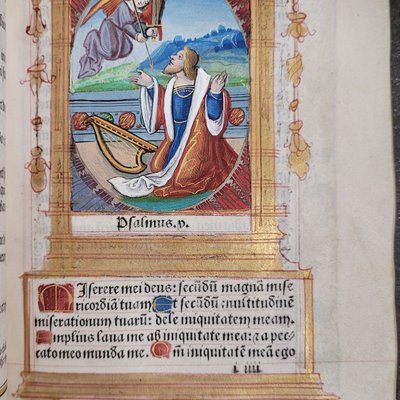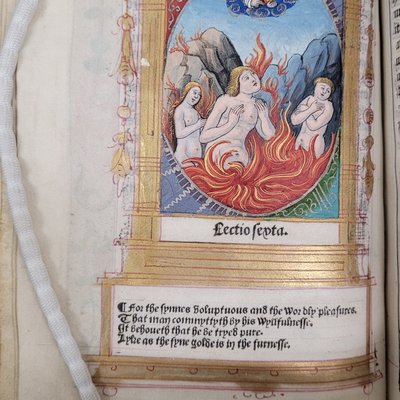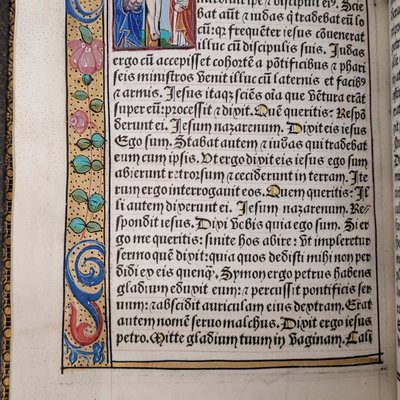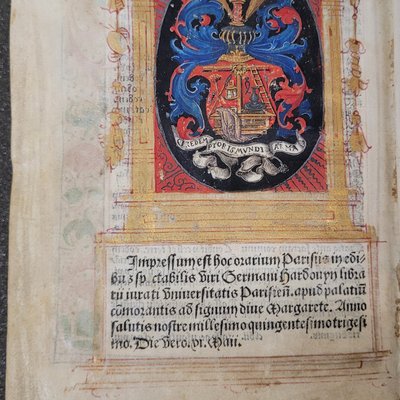February 2023
This remarkable 16th-century book of hours (Use of Salisbury) was printed by Germain Hardouyn in Paris in 1530 with the title Enchiridion preclare ecclesie Sarum. It is full of decorative features (borders with floral motifs on gold, initials in various colours) and illustrations, most of them full-page illustrations inside golden architectural frames. The main text is in Latin while the captions underneath the full-page illustrations are in English.
Books of hours were a popular type of Christian devotional books. They were developed for devout laity, possibly women in particular, to guide them through their daily prayers. The books include sections from a more or less fixed set of texts, namely a calendar, canonical hours (such as Hours of the Virgin), Psalms, Litany, Office of the Dead, and Suffrages (Funderburg 2021). There are some local variations, called Use. The Use of Salisbury (Sarum) was widespread in England.
Our little volume was deliberately made to look like a late medieval handwritten book. The font looks vaguely similar to some Gothic scripts. The text includes decorated initials and the typical abbreviations used by medieval scribes. Even faint ruling in red was added to the pages. Essential for the layout of medieval folios of parchment (or paper), ruling was completely superfluous for printing, as page layout was created inside the tray that held the movable types and any other printable (or indeed non-printable) elements. In our volume, the ruling is a purely decorative element applied to hark back to manuscripts of previous decades and centuries. Even with the volume in one’s hand, the reader is still easily fooled into thinking they are holding a manuscript because the printers used parchment instead of paper. Like a sophisticated, high-quality decorative programme, the use of parchment in printing is a clear indicator of a luxury item.
St John’s book is the product of masters in their trade. The Hardouyn (also Hardouin) brothers, Gillet (or Gilles) and Germain, were expert book printers specialising in the production of books of hours. ‘Of the 100 Latin editions printed by Gilles and Germain between 1499 and 1541 only two were not books of hours’ (Mullins 2013, p. 140). They printed the book of hours (Use of Rome) in 89 editions (Mullins 2013, p. 140) in contrast to the three editions of the Use of Salisbury in 1528, 1530, and 1533. St John’s volume was thus part of a minor sideline of the Hardouyns’ business. Today there may only be as few as 11 copies of the 1530 edition still in existence.
Unfortunately, there are no provenance inscriptions nor any other clues pointing to previous owners. Generally referred to as ‘Queen Mary’s mass-book’ it was said to have belonged to Mary of Modena (1658-1718), wife of James II and as such Queen of England, Scotland and Ireland. The earliest recorded connection with ‘a Queen Mary’ is also the earliest reference to St John’s College’s ownership of the volume. It appears in the travel accounts of the German book collector Zacharias Konrad von Uffenbach (1683-1734), who visited Oxford in 1710. Another account from 1718 by the antiquarian Thomas Hearne (1678-1735) does not mention a connection with Mary of Modena. The truth is that we do not know how the volume came into our library or who had owned it before – but we do love a book with a story at St John’s!
If you want to learn more about this remarkable book, check out our blog post ‘St John’s Printed Manuscript’ here.
References:
Funderburg, Katie (2021) ‘Books of Hours’, Illinois Library: Rare Book & Manuscript Library, May. Available at: https://www.library.illinois.edu/rbx/research-instruction/research-guides/books-of-hours/ (Accessed: 02/02/2023).
Mullins, Sophie (2014) Latin Books Published in Paris, 1501-1540. PhD thesis. University of St Andrews. Available at: https://research-repository.st-andrews.ac.uk/handle/10023/6333 (Accessed 02/02/2023).

